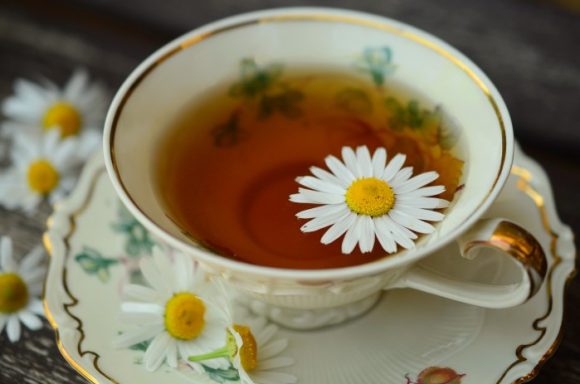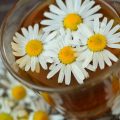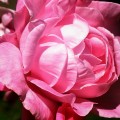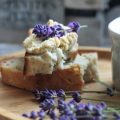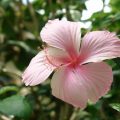- Geraniums: Two Floral Families with Striking Flowers - December 15, 2019
- Festive Flowers for a Dazzling Winter Bouquet or Centerpiece - December 14, 2019
- Forcing Flower Bulbs For the Holiday Season - December 13, 2019
Herbal tea is a beverage that doesn’t contain any actual tea leaves. Also called tisane, these drinks are naturally caffeine-free and can be served either hot or cold. Tisanes can be used for their health benefits or simply for refreshment.
Herbal teas can contain leaves, flowers, seeds, and even bark from edible plants. Many of these ingredients can easily be grown in your garden. The components of tisanes are usually dried so that they can be stored in a cool, dark place for several months.
There is a long tradition of drinking herbal teas throughout the world. Records indicate that they were frequently consumed in ancient Egyot and China nearly five thousand years ago. Many of the flowers and leaves that are used in herbal teas are said to have medicinal properties. They are also frequently used to promote relaxation.
Chamomile is one of the most ancient herbal remedies in the world. These small daisy-like flowers have been proven to reduce inflammation both topically and internally. Tisanes are prepared from dried chamomile flowers, either whole or powdered. Chamomile is also well-known for being soothing and promoting restful sleep.
Lavender flowers are another herb associated with restfulness. Popular in aromatherapy, the dried lavender buds and leaves can be brewed into a tea that is usually consumed hot. It is believed to help reduce feelings of anxiety and stress.
Hibiscus flowers produce a tart red tisane that is frequently served cold. Hibiscus contains vitamin C in quantities sufficient to help boost the immune system when consumed regularly. Hibiscus tea exhibits antibacterial properties that may aid in healing when you’re under the weather.
There are as many as six hundred types of mint, many of which are used in herbal teas. The most popular varieties of mint tea are spearmint and peppermint. This tisane is commonly consumed in the region of North Africa and is shown to have anti-inflammatory benefits.
Rose petals are often brewed into tea in the Middle East. In many cases, the rose hips are added to the tea as well. Rose hips are full of vitamin C and are sometimes consumed to ward off colds and sniffles during the winter months.
Herbal teas and tisanes are becoming more popular as health-conscious trends move away from caffeine. It is not uncommon to find many of these tisanes at your local grocer or health food store.
If you would like to create your own herbal teas at home, remember to be certain the flowers and leaves are free of pesticides. Choose unblemished herbs and be sure to rinse them thoroughly.
To dry the herbs, remove the stems and spread the herbs into a single layer on baking sheets. Place in the oven on its slowest setting. This is usually less than 200 degrees. Dry the herbs for 2-4 hours or until they crumble easily.
Store dried herbs in a glass container with a tight-fitting lid. To make the tisane, use a tea ball or purchase fillable tea bags. Most varieties of herbal tea should steep for 5-10 minutes for full flavor. Experiment with mixing flavors to create your own custom blend.
Homemade herbal tea would make a lovely gift for a birthday, Mother’s Day, get well, or thinking of you occasions. Add a jar of artisinal honey, and show your loved one how much you care.
